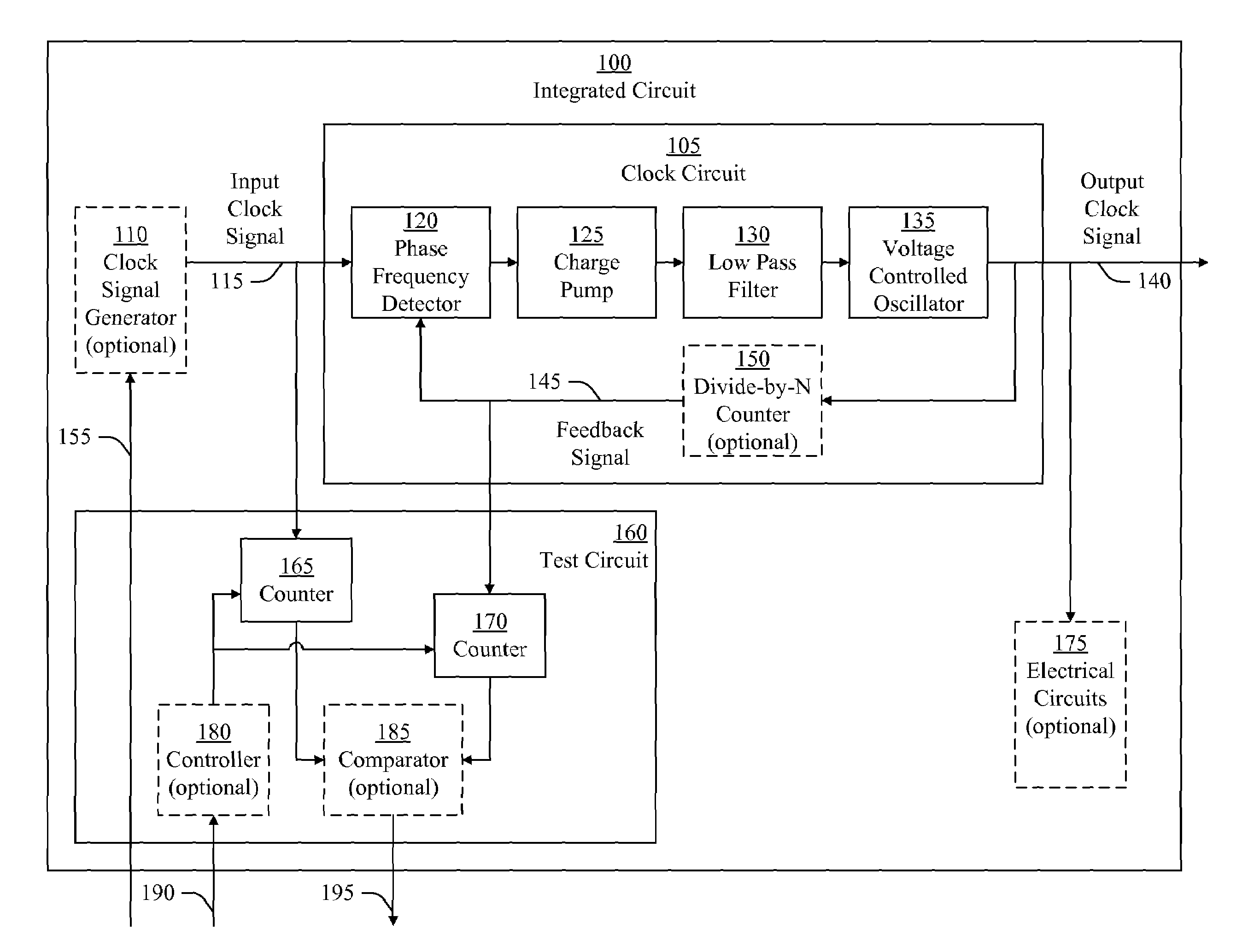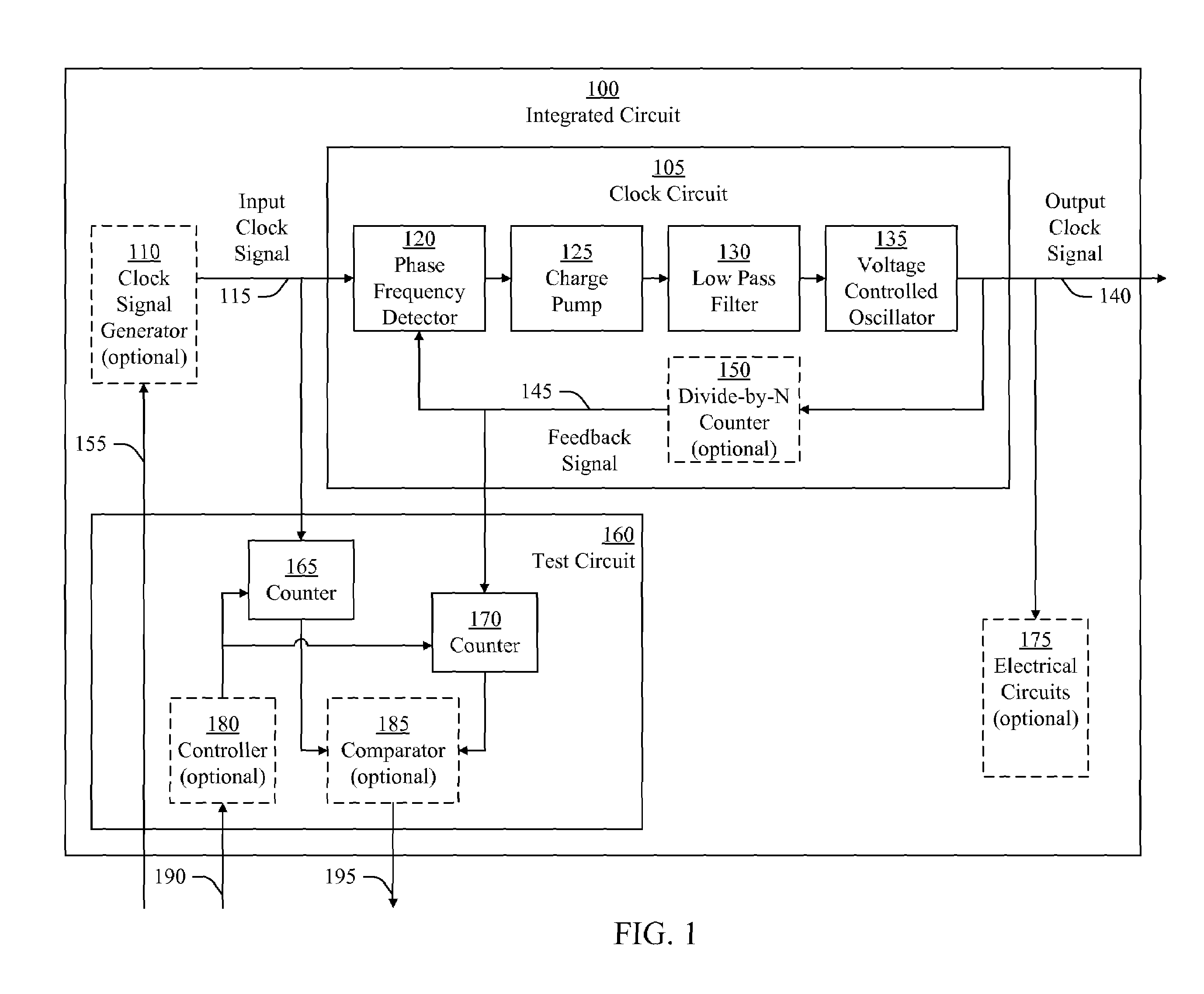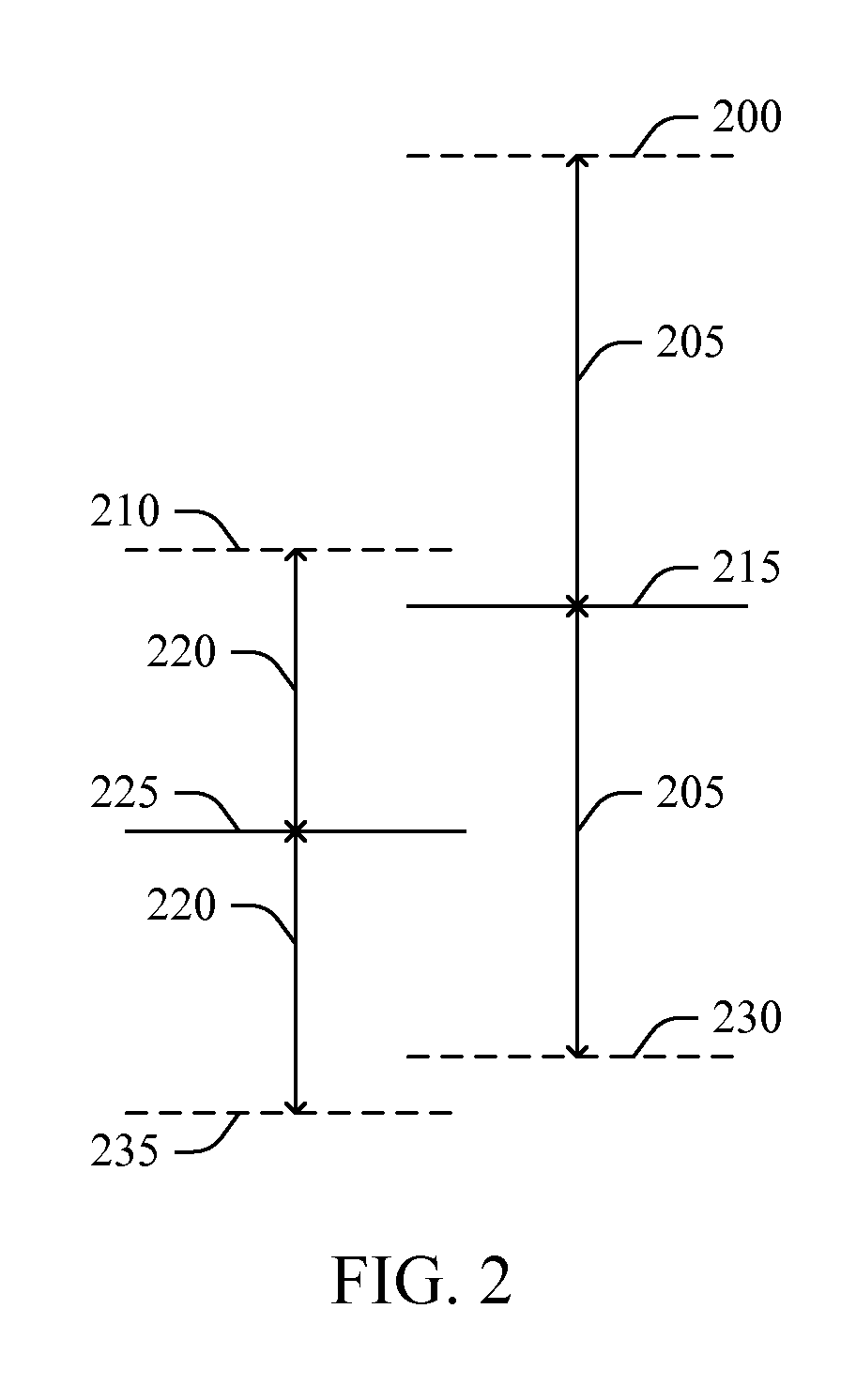System and method for testing a clock circuit
- Summary
- Abstract
- Description
- Claims
- Application Information
AI Technical Summary
Benefits of technology
Problems solved by technology
Method used
Image
Examples
Embodiment Construction
[0020]In various embodiments, an input clock signal to a clock circuit is set to an elevated frequency, which is higher than a specified frequency of the input clock signal. A number of clock cycles of the input clock signal in a test interval are counted to within a tolerance of the elevated frequency. The tolerance of the elevated frequency is higher than a tolerance of the specified frequency. Further, a number of clock cycles of a feedback clock signal of the clock circuit are counted in the test interval. The number of clock cycles of the input clock signal and the feedback clock signal are compared to determine whether a frequency of the output clock signal is above an output threshold frequency. Because the tolerance of the elevated frequency is higher than the tolerance of the specified frequency, the test interval needed for counting the number of clock cycles to within the tolerance of the elevated frequency is less than a test interval needed for counting the number of cl...
PUM
 Login to View More
Login to View More Abstract
Description
Claims
Application Information
 Login to View More
Login to View More - R&D
- Intellectual Property
- Life Sciences
- Materials
- Tech Scout
- Unparalleled Data Quality
- Higher Quality Content
- 60% Fewer Hallucinations
Browse by: Latest US Patents, China's latest patents, Technical Efficacy Thesaurus, Application Domain, Technology Topic, Popular Technical Reports.
© 2025 PatSnap. All rights reserved.Legal|Privacy policy|Modern Slavery Act Transparency Statement|Sitemap|About US| Contact US: help@patsnap.com



